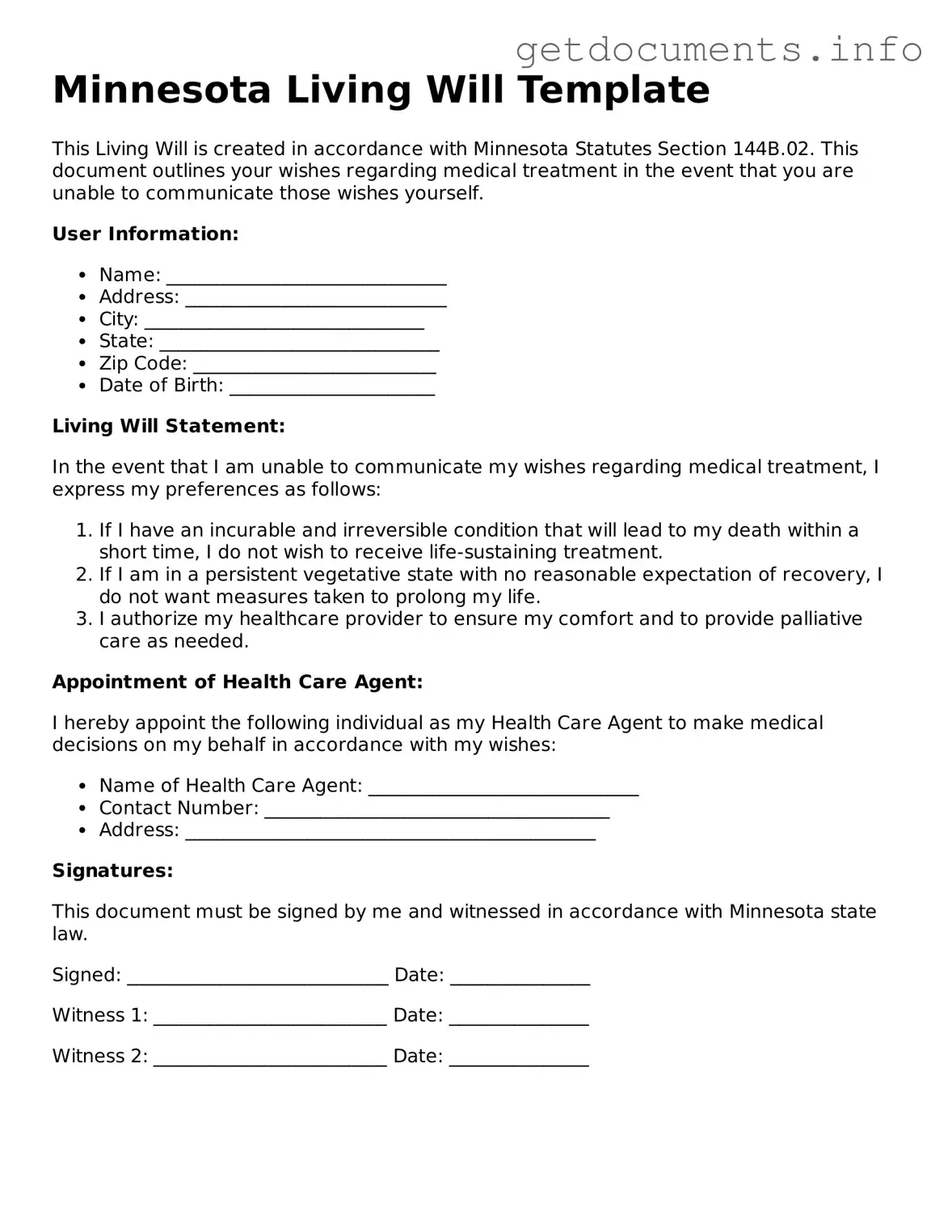In Minnesota, the Living Will form plays a crucial role in healthcare planning, allowing individuals to express their wishes regarding medical treatment in situations where they may be unable to communicate those preferences themselves. This legal document outlines specific instructions about life-sustaining measures, such as resuscitation and artificial nutrition, ensuring that a person's desires are honored during critical medical situations. By completing a Living Will, individuals can provide clarity for family members and healthcare providers, alleviating the burden of decision-making during emotionally challenging times. It is essential to understand that this form is part of a broader set of advance directives, which may also include a Health Care Power of Attorney. The Living Will is designed to be straightforward, but it is advisable to consider discussing one's wishes with loved ones and healthcare professionals to ensure that the document accurately reflects personal values and preferences. Ultimately, this form empowers individuals to maintain control over their medical care, even when they cannot speak for themselves, fostering peace of mind for both the individual and their family.
